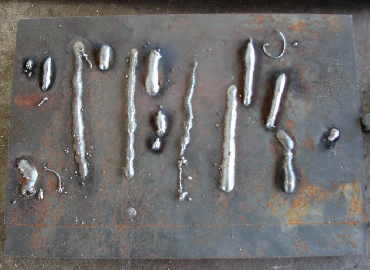Any field of work is prone to defects, welding included. Although welding is a crucial metal fabrication process, different defects can occur like change in shape, size of the metal. These welding problems arise due to the use of the wrong technique or tools.
Let’s dive into the most common welding problems that occur and how to fix them.
Cracks
It is not easy to fill up the cracks in the welding process because a new weld needs formation to correct the error. It is a time-consuming process, so to avoid cracks, it’s best to pay more attention to the grinding, cleaning, and filing the plates’ edges.
Undercut
This welding problem occurs if the arc voltage becomes too high or stays for too long. The welder’s quick travel speed or incorrect electrode used with a wrong angle can also lead to an undercut. To avoid this, it is better to use the right-sized electrode because undercut can occur when the molten puddle of metals becomes too large.
Also, avoid holding the electrode near the vertical plate when making a horizontal weld and monitoring the weave.
Porosity
Porosity happens as a result of weld contamination. Hydrogen, oxygen, and nitrogen in the weld pool get trapped in the weld puddle. The presence of moisture, rust, grease, or paint can also cause porosity.
Moreover, insufficient gas shielding can cause porosity. There are numerous ways to avoid porosity, such as:
- Cleaning the welding materials
- Using dry electrodes and materials
- Using proper welding technique
- Using proper electrodes
- Having correct arc distance
- Reducing arc travel speed that allows the gas to escape and avoid forming bubbles
Spatter
Most commonly, spatter occurs in the MIG welding technique. Spatter is a buildup near the welding arc in the form of molten metal droplets. Wrong polarity, exceptionally high current, or insufficient gas shielding causes spatter. To avoid this, lowering the current, clean welding surface, using proper polarity, and reducing the arc length is a good step.
Incomplete Penetration
Not wholly filled up groove causes incomplete penetration. This welding problem means that the weld metal doesn’t pass through the joint thickness properly. An electrode with a large diameter, improper joint, misalignment, and too much space between the metal welding together are the leading causes of improper penetration.
To avoid this altogether, use proper joint geometry for proper alignment, reduce arc travel speed, and use the electrode’s correct size.
Incomplete Fusion
This type of welding problem occurs when the base metal and the weld metal don’t fuse well together. A gap forms in the joints that are not filled with molten metal weld. It happens when the surface is contaminated, low heat, incorrect electrode angle, fast arc travel speed, or the molten weld pool is too large and flows in front of the arc.
To avoid this, it’s better to use a high welding current with a proper arc voltage, cleaning the metal before starting the welding process, avoiding the molten weld from flowing in front of the arc, using the correct electrode angle and diameter, and reducing deposition level.

